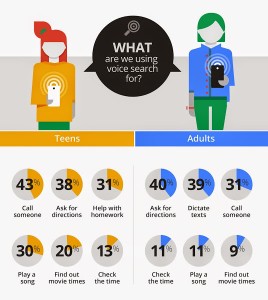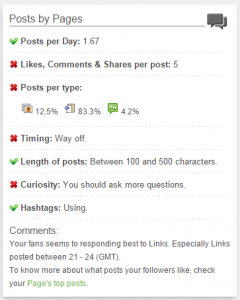 In this article, I’m focusing on the tricks and strategies for measuring the success of your hard work. You can’t know if your blogging is working if you don’t know what you’re looking to achieve. You can’t demonstrate the success of your work if you don’t measure for your return on investment or ROI.
In this article, I’m focusing on the tricks and strategies for measuring the success of your hard work. You can’t know if your blogging is working if you don’t know what you’re looking to achieve. You can’t demonstrate the success of your work if you don’t measure for your return on investment or ROI.
When you start blogging, you should already know what you’re looking to achieve. You should already have a thorough, written-out plan for your blogging activity. You won’t be able to get the most out of your blog without it.
Below, I’ve provided a collection of great resources to help you not only succeed according to your plan but also measure your success effectively.
———
How can I get the most out of my blogging effort?
You want to measure the ROI of your blogging efforts, right? Well, hold on just a minute because you need to know this first. While measuring your blogging ROI is the focus of this article, I’d be doing you a disservice by leaving this section out.
Elena Dobre wrote an article series on the Jeff Bullas blog about business blogging that is very thorough and useful. She writes in part one of the series that the focus of your business blogging should be on inbound marketing in order to generate leads.
While my own blog doesn’t really constitute as a business blog, I am trying to bring traffic to my site with set purposes and goals, similar to a business. I have an ROI in mind. In my previous work experiences, I’ve used blogging to bring people to my company’s website in order to both bring awareness and generate leads. Now that I have my own independent blog, I’m trying to focus on increasing awareness and impact.
Elena goes further in her article to explain four benefits of business blogging, which I suggest you take full advantage of with your own site.
You want a quick and easy way to turn blog readers into customers, I’m sure. While it may not be as quick or easy as you’d like, Garrett Moon of CoSchedule suggests you start by developing advocates and move on to customer conversion. I agree that this is definitely a great way to go because your patience can pay off far more than if you pushed hard for immediate results in the beginning.
Garrett gives readers a 5-phased approach (six if you count the bonus one) to the reality of content marketing. It is clear that patience is key. Your customer relationships and loyalty will be stronger and far more lasting if you take the time to build them gradually.
In the end, this article is most helpful if your business blogging goals include customer quality and loyalty. Your blogging is best when you produce content that visitors want to see and use.
Are you dissatisfied with your content results thus far? Lindsay Kolowich of HubSpot has some fresh ideas to get the most out of your work.
Taking a different approach to content promotion, Lindsay provides 10 ideas on improving article results, including one that I especially found interesting: using your email signature. I have links to my blog and social media profiles in my signature, but I never thought of advertising my recent articles there. It’s definitely something I’m going to try out, and you should consider doing so as well. There’s no harm in trying…
If you’re careful…
Having too many links in your signature increases the likelihood that your emails will go straight to a recipient’s spam folder, so be prudent with which links and how many you include.
———
What do I measure for ROI and how?
Does your blogging strategy include information on the metrics you’re going to focus on when measuring ROI? It should. Below, I provide expert resources to help you determine what you need to measure for ROI along with the best ways to do so in a time-efficient manner.
John Bonini of Impact wrote an article on blogging metrics that has three in particular that he recommends. John’s article goes into detail about what to measure, how to measure it, and how often to do so.
I agree with his choices in metrics, but I have to include one more that I use with my own blog. Using Google Analytics, I like to keep track of how long people are staying on my site and whether they “bounce” right off upon arrival. It helps me determine whether there’s something I need to improve upon as long as I use it effectively (I’m still learning the ins and outs of this complex tool).
My last resource I want to include here has been mentioned in a previous post. However, due to how thorough Kim Garst is in her ultimate blogging guide, I had to include it again. This time, I focus on the section she has on measurement. She makes a fantastic point that I have yet to include, which is that we can’t obsess over measurement. If we obsess, we can lose track of our more important focus points, such as content quality.
I agree that it’s important to measure long-term trends in a blog’s traffic and interaction, but it’s something I have not had the opportunity to analyze yet. My blog is very new, but I can still maintain a tracking system so that when time passes, I’m able to measure the trends more effectively.
———
Well, I’ve done my best to include some of the leading sources for getting the most out of your blogging and finding the best ways to measure for ROI. There are many other sources with great articles on this subject, but unfortunately, I could not go in-depth about them here. However, I have to recommend you look into these authors/sites for their take on this subject:
Do a Google search of measuring blogging ROI, which ought to provide great results, but be careful. Always check the date of the article to make sure it doesn’t give you outdated information. Measurement tactics change over time, and some of the recommendations from 2013 or even 2014 may not work anymore.
As I always say when asked about blogging ROI, the best way for you to know what works for your business is to experiment on your own. You’re the one who knows what your company’s unique challenges and interests are, so it’s up to you to find the metrics that would have the biggest impact.
———
This article is a continuation of a blogging series I’ve been sharing on Business 2 Community. It originally appeared in modified form on the Marketing Innovator website.
To read the other articles in this series, you can find each of them here:
Is Blogging Right for Your Business? An Analysis
Getting Started with Business Blogging
How to Keep Your Business Blog Organized
More to come…
(349)









